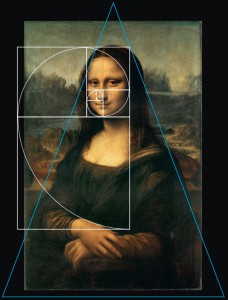Leonardo da Vinci, who lived between 1452-1519, is one of the most prominent figures that influenced the Renaissance era. He is not only considered as one of the greatest painters in the history of art, but his works as a scientist and an inventor also make him a pioneer in Renaissance.
Da Vinci was a prolific engineer, scientist, theorist, sculptor, and architect. He displayed his versatility and sophistication in every field. He described and sketched ideas for many inventions hundreds of years ahead of his time. He also made drawings and notes on a variety of subjects, including anatomy and astronomy.
As a mathematician, military engineer and architect, he designed buildings, flying machines and a type of armoured fighting vehicle as well.
As he got more interested in human body and anatomy, he made his initial works on human body proportions, anatomy and physiology in late 1480s.
In due time, he combined his innovative techniques in painting, detailed knowledge of anatomy and light with physiognomy, which refers to assessing a person’s character or personality from their outer appearance, especially the face, and expression of emotion and gesture. All such efforts of da Vinci have placed a land mark on his each and every piece of art.
Ultimately, all talents of da Vinci presented above certainly leads us to his unique and most invaluable painting: Mona Lisa, for which he is utmost recognized worldwide.

The woman’s half-smile, the position of her hands and her steady gaze display da Vinci’s talent in using physiognomy. This was absolutely an important factor in creating the air of mystery.
With Mona Lisa, da Vinci introduced for the first time a technique called “sfumato,” which refers to the technique of oil painting that allows a soft transition from one colour to another.
While applying mathematics in Mona Lisa, da Vinci used ‘The Golden Ratio,’ which means that if a rectangle is drawn around the face of ‘Mona Lisa’, the ratio of the height to width of that rectangle is equal to the ‘Golden Ratio’.

True Golden Spiral: the length of the side of a larger square to the next smaller square is in the ‘Golden Ratio’.
One thing today discussed about the painting is the identity of the woman portrayed. Some argue that the painting belongs to the wife of the Florentine merchant Francesco del Giocondo while some other say she was just an ordinary woman.
What is beyond discussion is the value of the works of Leonardo da Vinci.
Resoruces:
https://en.wikipedia.org/wiki/Leonardo_da_Vinci#Legacy
https://www.britannica.com/story/why-is-the-mona-lisa-so-famous
https://en.wikipedia.org/wiki/List_of_works_by_Leonardo_da_Vinci

